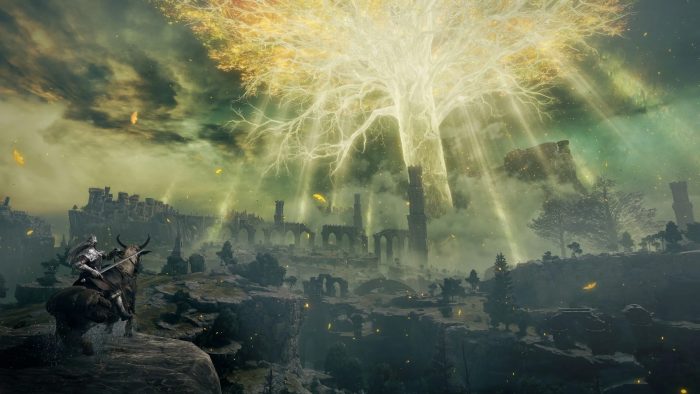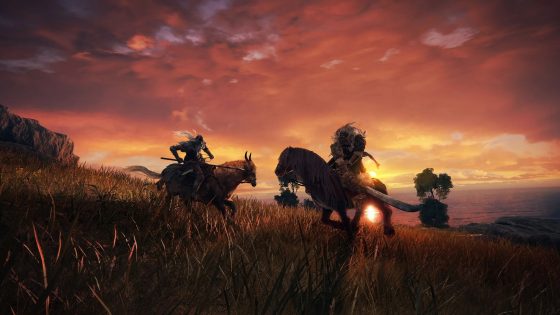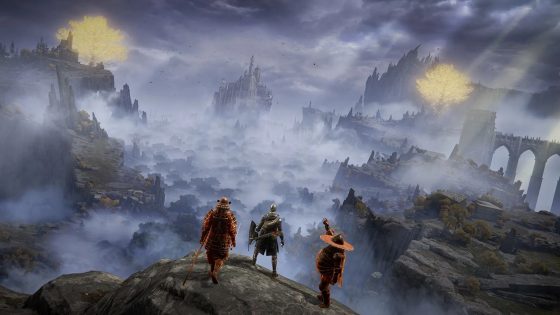
The gaming year of 2022 was lined with stellar releases from all of the major publishers, from sprawling JRPGs like Xenoblade Chronicles 3, to exciting new strategy games like Triangle Strategy. We even had two Pokémon releases—Legends: Arceus and Scarlet/Violet—and of course, God of War: Ragnarök.
Despite all those releases, one game stood head and shoulders above the rest—FromSoftware’s foray into open-world gaming, Elden Ring. Combining the ruthless difficulty of their Dark Souls formula with the appeal of a large world to explore, Elden Ring remained a stalwart favorite throughout the year, and took home a staggering 281 Game of the Year (GOTY) awards from media outlets.
Yet, casting our minds back to February 25th, 2022, our first impressions of Elden Ring were rather mixed. As seasoned Dark Souls veterans, we brought eleven years of experience into Elden Ring but left feeling decidedly lukewarm.
Now, a year later, we’ve been replaying Elden Ring and loving every minute of it. So what’s changed? Is it the game, is it us, or something else entirely?
Join us today as we revisit the Lands Between, one year on from Elden Ring’s release.
Emboldened by the Flames of Ambition

A year ago, we entered the Lands Between thinking—like many players—that Elden Ring was simply a larger-scale Dark Souls. Sure, you could ride around on Torrent all you wanted, but ultimately that huge land mass was just a gimmick to pad out the area between traditional Legacy Dungeons, right?
We were frustrated at the sudden difficulty spikes when transitioning to new areas (Altus Plateau, in particular, was murderously hard), and disliked how the end-game dragged on, feeling like Morgott should have been roughly the end of the game. At just over 70 hours of playtime, we finally slammed into the game’s final wall—Elden Beast—and after re-rolling our character a bunch of times via Larval Tears, we finally gave up and said “good enough.”
Shamefully, we traded in our copy of the game and thought nothing of it—until the game awards started rolling in. With literally hundreds of awards piling up, and seeing all the crazy speedruns and challenge videos online, we wondered if—just maybe—we’d been a little too harsh.
Maybe, we’d approached Elden Ring the wrong way.
Thou Art of Passing Skill

See, Elden Ring isn’t really Dark Souls: The Open World Game. FromSoftware have distilled over a decade’s worth of experience into crafting a game that innovates on their formula, not just expands upon it—there’s a reason that it’s not Dark Souls 4, after all.
Starting the game again with a fresh perspective, we decided to approach Elden Ring like an MMO—a sprawling adventure with a distant goal, where anything could happen along the way. We decided to play a Faith-based build this time around, combining the best of pyromancy and holy magic from the previous Souls games.
We took our time exploring, slowly inching across the map, detouring into caves and shrines. Sometimes we found useful new spells or weapons, and sometimes the reward was just a handful of runes. After playing “tag” with a spiky chariot for the better part of two hours, our reward was getting thrashed by an Ulcerated Tree Spirit—but it was all part of the fun.
Elden Ring’s atmospheric approach to level design allowed us to really sink into the game and let it take us on a journey. Even in the later parts of the game, this measured, explorative approach led to new surprises, like reaching Consecrated Snowfields or Subterranean Shunning-Grounds, neither of which we’d visited in our first playthrough.
By the time we crash-landed in Crumbling Farrum Azula, we were still raring to go—and yet, surprisingly, we hadn’t even played for much longer than our original run.
Last Of All Kings

Finally, it sank in—what FromSoftware and legendary director Hidetaka Miyazaki had set out to achieve with Elden Ring.
This was not Dark Souls 4, nor was it simply a padded-out sequel. FromSoftware’s announcement of the new Armored Core—a return to the original franchise they were known for, well before the Demon Souls that catapulted them into stardom—and Miyazaki’s own speech at The Game Awards 2022 made us realize something.
FromSoftware made Elden Ring as if it was the last “Souls” game they’d ever make.
Miyazaki has been very frank about Armored Core not taking any Soulslike mechanics; it’s quite possible (though unlikely) that Elden Ring is the last Soulslike we’ll see from FromSoftware.
If that were true, then Elden Ring isn’t simply another entry, trotted out to meet public expectations. It’s a vibrant swan song of epic proportions, a truly engaging adventure that can easily span hundreds of hours, from that first church to towering mountain heights, and into the bowels of the earth.
By approaching Elden Ring with a completely new perspective, we’ve fallen in love all over again—with the Lands Between, and with the creative direction that birthed a beautiful culmination of everything FromSoftware has ever created.
Final Thoughts
Outside of speedrunners with their godlike mastery of the game, Elden Ring isn’t something to be played, but rather, experienced. Every area is a chance to explore, to face new challenges, to be surprised and enchanted at the unexpected—and sometimes, just to watch the sunrise at the edge of the world.
Perhaps the game’s first boss—Margit—is right, and it’s time to put our foolish ambitions to rest. In doing so, we’ve come to truly appreciate the scope and depth of Elden Ring, and found a mixture of difficult gameplay and open-world exploration that’s completely unrivaled—not just twelve months later, but perhaps for years to come.
Are you still journeying in the Lands Between, a year after Elden Ring’s release? Let us know in the comments below, and as always, thanks for reading!
Recommended Post
Dark Souls Remastered - PS4 Review
Recommended Post




